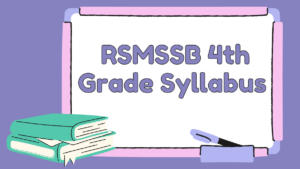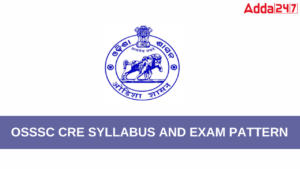Table of Contents
The ASRB NET Genetics and Plant Breeding Syllabus 2025 serves as an important roadmap for candidates preparing to qualify for ASRB NET Exam 2025. Conducted by the Agricultural Scientists Recruitment Board, this exam assesses a candidate’s in-depth knowledge and research aptitude in the specialized field of genetics and plant breeding. The ASRB NET Genetics and Plant Breeding Syllabus highlights a wide range of topics from classical genetics to advanced breeding techniques. In this article, we provide the detailed syllabus and exam pattern to help aspirants plan their preparation effectively and confidently.
ASRB NET Genetics and Plant Breeding Exam Pattern 2025
The ASRB NET Genetics and Plant Breeding exam follows a standardized pattern aimed at evaluating candidates’ subject expertise and research aptitude. The exam comprises a single paper with 150 multiple-choice questions, each carrying 1 mark, totaling 150 marks. The duration of the exam is 2 hours, and there is a negative marking of one-third (1/3rd) mark for each incorrect answer.
| ASRB NET Exam Pattern For Genetics & Plant Breeding | |
| Exam Name | ASRB NET Exam 2025 |
| Conducting Body | Agricultural Scientists Recruitment Board |
| Exam Mode | Multiple Choice Questions |
| Total Number of Questions | 150 |
| Total Marks | 150 |
| Marking Scheme | +1 for the Correct Answer |
| Official Website | asrb.org.in |
ASRB NET Genetics and Plant Breeding Syllabus 2025
The ASRB NET Syllabus for Genetics and Plant Breeding covers core areas and recent advances in the field. Candidates who have chosen Genetics and Plant Breeding as the discipline should be well-versed with each of the topics specified in the syllabus. A clear grasp of statistical tools and experimental designs used in plant breeding research is also important for exam success. Here, we have discussed the ASRB NET Genetics and Plant Breeding Syllabus, which highlights important subjects that applicants should study for the exam.
Unit 1: General Genetics and Plant Breeding
Mendelian inheritance. Cell structure and division, Linkage, its detection and estimation. Epistasis. Gene concept, allelism, and fine structure of the gene. Extra chromosomal inheritance. DNA – structure, function, replication, and repair. Genetic code. Gene- enzyme relationship. Replication, Transcription, and Translation. Gene regulation in prokaryotes and eukaryotes. Nuclear and cytoplasmic genome organization. Spontaneous and induced mutations and their molecular mechanisms. Crop domestication, evolution of crops, and centres of diversity. Emergence of scientific plant breeding. Objectives and accomplishments in plant breeding and the role of National and International institutes. Gametogenesis and fertilization. Modes of sexual and asexual reproduction and their relation to plant breeding methodology. Apomixes, incompatibility, and male sterility systems and their use in plant breeding.
Unit 2: Economics, Botany, and Plant Breeding Methods
Origin, distribution, classification, description and botany of Cereals (Wheat, Rice, Maize, Sorghum, Pearl Millet, Minor Millets); Pulses ( Pigeonpea, Chickpea, Black Gram, Green Gram, Cowpea, Soyabean, Pea, Lentil, Horse Gram, Lab-Lab, Rice Bean, Winged Bean, Lathyrus, Lima Bean; Oilseeds (Groundnuts, Sesamum, Castor, Rapeseed Mustard, Sunflower, Niger, Linseed); Fibers and sugar crops, fodder and green manures; Breeding cross-pollinated and clonally propagated self-pollinated, methods for crops. Component, recombinational, and transgressive breeding. Single seed descent. Populations, their improvement methods and maintenance, Hybrid breeding, and the genetic basis of heterosis. Ideotype breeding. Mutation breeding.
Unit 3: Genome Organization and Cytogenetics of Crop Plants
Chromosome structure, function, and replication. Recombination and crossing over. Karyotype analysis. Banding techniques. In situ hybridization. Special types Of chromosomes. Chromosomal interchanges, inversions, duplications, and deletions. Polyploids, haploids, aneuploids, and their utility. Wide hybridization and chromosomal manipulations for alien gene transfer. Pre- and post-fertilization barriers in wide hybridization. Genome organization and cytogenetics of important crop species- wheat, maize, rice, Brassica, cotton, Vigna, potato, and sugarcane. Principles and procedures of genome analysis. Cytogenetic techniques for gene location and gene transfer, Construction and use of molecular marker-based chromosome maps. Comparative mapping and genome analysis.
Unit 4: Quantitative and Biometrical Genetics
Quantitative characters. Multiple factors of inheritance. Genetic control of polygenic characters. Genetic advance and types of selection, and correlated response. Hardy-Weinberg law. Linkage disequilibrium. Genetic load. Polymorphism. Breeding value, heritability. Response to selection, correlated response. Estimates of variance components and covariance among relatives. Mating designs with random and inbred parents. Estimation of gene effects and combining ability. Effects of linkage and epistasis on estimation of genetic parameters. Maternal effects. Genotype-environment interactions and stability of performance. Heterosis and its basis. Mating system and mating design- diallel, line X tester, NC-I, NC-II, and NC-III designs, approaches to estimate and exploit the component of self and cross-pollinated crops. Genotype X environment interaction and stability analysis.
Unit 5: Genetic Engineering and Biotechnological Tools in Plant Breeding
Somatic hybridization, micropropagation, somaclonal variation in vitro mutagenesis. Artificial synthesis of the gene. Genetic and molecular markers, generations of molecular markers and their application in genetic analyses and breeding. Molecular markers in genetic diversity analysis and breeding for complex characters. Gene tagging, QTL mapping, and marker-assisted selection. Genome projects and utilization of sequence formation. Vectors. DNA libraries, DNA fingerprinting, DNA sequencing. Nucleic acid hybridization and immunochemical detection. Chromosome walking, Recombinant DNA Gene Cloning Strategies. Genetic transformation and transgenics. Antisense RNA, RNAi, and microRNA techniques in crop improvement.
Unit 6: Plant Breeding for Stress Resistance and Nutritional Quality
Genetic basis and breeding for resistance to diseases and insect-pests. Breeding for vertical and horizontal resistance to diseases. Genetic and physiological basis of abiotic stress tolerance. Breeding for resistance to heat, frost, flood, drought and soil stresses. Important quality parameters in various crops, their genetic basis and breeding for these traits. Role of molecular markers in stress resistance breeding: MAS, MARS and MABB.
Unit 7: Plant Genetic Resources and their Regulatory System; Varietal Release and Seed Production
Plant exploration, germplasm introduction, exchange, conservation, evaluation, and utilization of plant genetic resources. Convention on Biological Diversity and International Treaty on Plant Genetic Resources for Food and Agriculture. Intellectual Property Rights. Biodiversity Act. Plant Variety Protection and Farmers’ Rights Act. System of variety release and notification. Types of seeds and the seed chain. Seed production and certification.
Unit 8: Statistical Methods and Field Plot Techniques
Frequency distribution. Measures of central tendency, probability theory, and its applications in genetics. Probability distribution and tests of significance. Correlation, linear, partial, and multiple regression. Genetic divergence. Multivariate analysis. Design of experiments- basic principles, completely randomized design, randomized block design, and split plot design. Complete and incomplete block designs. Augmented design, Grid, and honeycomb design. Hill plots, unreplicated evaluation. Data collection and interpretation.
| Related Posts |
| ASRB NET Vegetable Science Syllabus |
| ASRB NET Agronomy Syllabus |
| ASRB NET Previous Year Paper |




 Rajasthan 4th Grade Syllabus 2025 and Ne...
Rajasthan 4th Grade Syllabus 2025 and Ne...
 OSSSC CRE Syllabus 2025 Prelims and Main...
OSSSC CRE Syllabus 2025 Prelims and Main...
 Bihar Home Guard Syllabus 2025, Check �...
Bihar Home Guard Syllabus 2025, Check �...


 Adda247 Job portal has complete information about all Sarkari Jobs and Naukri Alerts, its latest recruitment notifications, from all state and national level jobs and their updates.
Adda247 Job portal has complete information about all Sarkari Jobs and Naukri Alerts, its latest recruitment notifications, from all state and national level jobs and their updates.